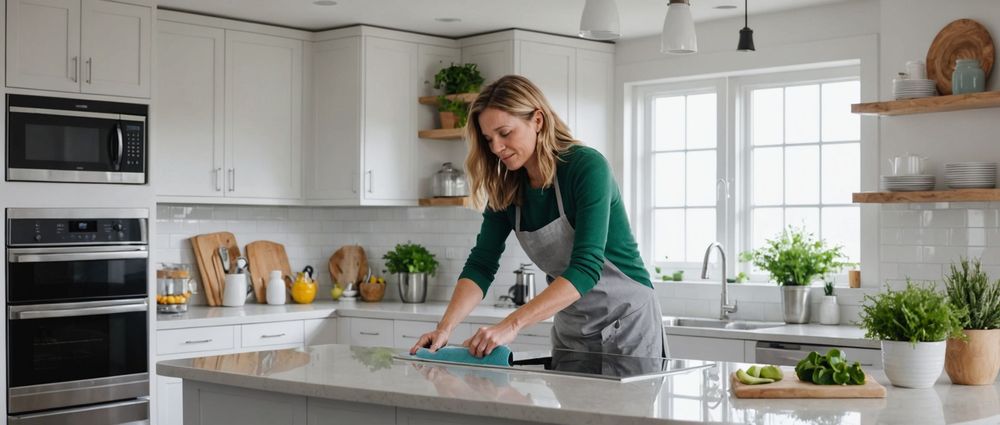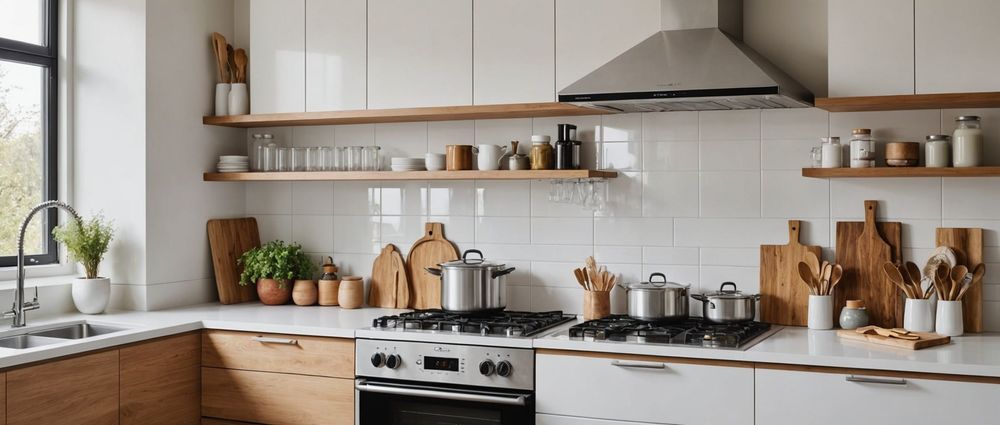Cleaning a glass top stove is a straightforward process that can significantly enhance its appearance and lifespan. Regular maintenance not only helps in removing dirt and grease but also prevents scratches and stains that can accumulate over time. This guide will walk you through effective methods for cleaning your glass stovetop, ensuring it remains shiny and functional.
Understanding Your Glass Top Stove

Before you start the cleaning process, it’s essential to understand the material of your glass top stove. They are made from tempered glass, which is durable but can be sensitive to certain cleaning agents and methods. Avoid using abrasive pads or harsh chemicals that can cause scratches. Additionally, ensuring your stove is completely cool before cleaning is crucial for safety and effectiveness. Familiarize yourself with the manufacturer’s guidelines to avoid any complications during the cleaning routine.
Gather Your Cleaning Supplies

Having the right supplies on hand will make your cleaning process easier and more efficient. Here’s a list of items you’ll need:
- Soft cloths or microfiber towels
- Dish soap or a gentle glass cleaner
- Baking soda
- White vinegar
- Plastic scraper or silicone spatula
Before you begin, ensure that you have all these items ready. The choice of cleaner matters a lot; using the wrong product can lead to more damage than good. For tough stains, combining baking soda and vinegar can create a powerful paste that targets grime without scratching the surface.
Basic Cleaning Steps

To start cleaning your glass top stove, follow these basic steps to ensure a thorough cleaning without causing damage:
- Make sure the stove is completely cool.
- Spray the surface lightly with the dish soap or glass cleaner.
- Let it sit for a few minutes to loosen any grime or food particles.
- Use a soft cloth to wipe down the surface, applying gentle pressure.
- If any residue remains, apply a paste of baking soda and vinegar and let it sit for additional five minutes before scrubbing gently with a cloth.
- Finally, rinse the surface with a clean, damp cloth to remove any cleaning agents.
Following these steps will help you maintain the cleanliness and shine of your glass top stove. Always avoid applying too much pressure to prevent scratching the glass. Focus on using circular motions with your cloth for the best results.
Dealing with Stubborn Stains and Burn Marks
Stubborn stains and burn marks can be particularly challenging but are not impossible to tackle. Here are some specific methods to handle tough spots:
- Use a plastic scraper: Gently scrape off the burnt food with a plastic scraper, working at a 45-degree angle to lift the residue without scratching.
- Make a baking soda paste: Mix baking soda with a small amount of water to create a thick paste. Spread it over the burn marks and let it sit for about fifteen minutes before scrubbing gently.
- Try rubbing alcohol: For spills that have baked onto the surface, apply some rubbing alcohol on a cloth and wipe the area. This can break down tough grease and restore clarity.
Remember, patience is key when dealing with stubborn stains. Rushing could lead to damaging the glass surface. Invest time in gently working through the residue for a cleaner finish.
Preventive Tips for Long-Term Maintenance
Preventive care can save you a lot of cleaning effort in the long run. Here are a few tips to keep your glass top stove in prime condition:
- Wipe spills immediately: Cleaning up any spills as soon as they occur will prevent them from hardening and becoming difficult to remove.
- Avoid sliding pots and pans: Sliding cookware can lead to scratches, so lift pots instead of dragging them across the surface.
- Use cookware with smooth bottoms: Cookware with rough bottoms can scratch the glass surface, so opt for smooth finish pots and pans.
Taking these simple preventive measures will extend the life of your glass top stove and reduce the frequency and intensity of your cleaning sessions.
Conclusion
Cleaning a glass top stove requires a delicate touch, but with the right methods and tools, it can become a quick and straightforward task. Adhering to proper cleaning techniques and utilizing effective supplies will maintain the elegance and functionality of your stove. Moreover, practicing preventive care not only minimizes the need for intensive cleaning but also ensures that your stove remains in great working condition for years to come.
FAQs
-
Can I use regular glass cleaner on a glass top stove?
While many glass cleaners are okay to use, avoid those with ammonia and harsh abrasives. It’s better to use a cleaner specifically designed for cooktops. -
What should I do if my glass top stove is scratched?
Minor scratches may not affect performance, but if they are deep, consider professional repair or replacement options. -
How often should I clean my glass top stove?
For optimal performance, clean your stove after each use, and conduct a deeper clean weekly. -
Can I use steel wool on my glass top stove?
No, steel wool can cause significant scratches and damage to the glass, so always opt for soft cleaning materials. -
Is it safe to use vinegar on my glass top stove?
Yes, vinegar is a safe and effective cleaning agent. It helps cut through hard water stains without harming the surface.